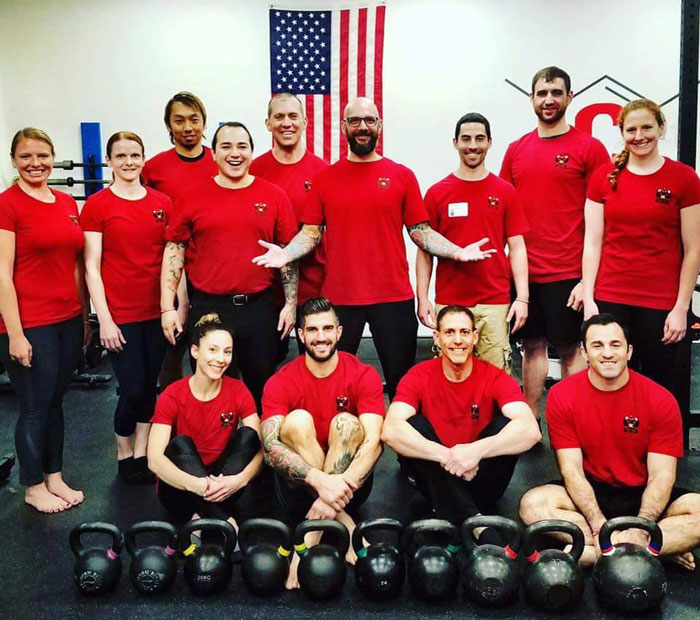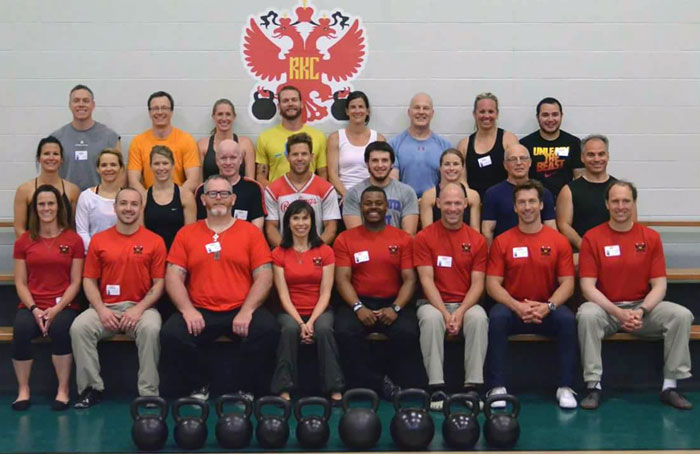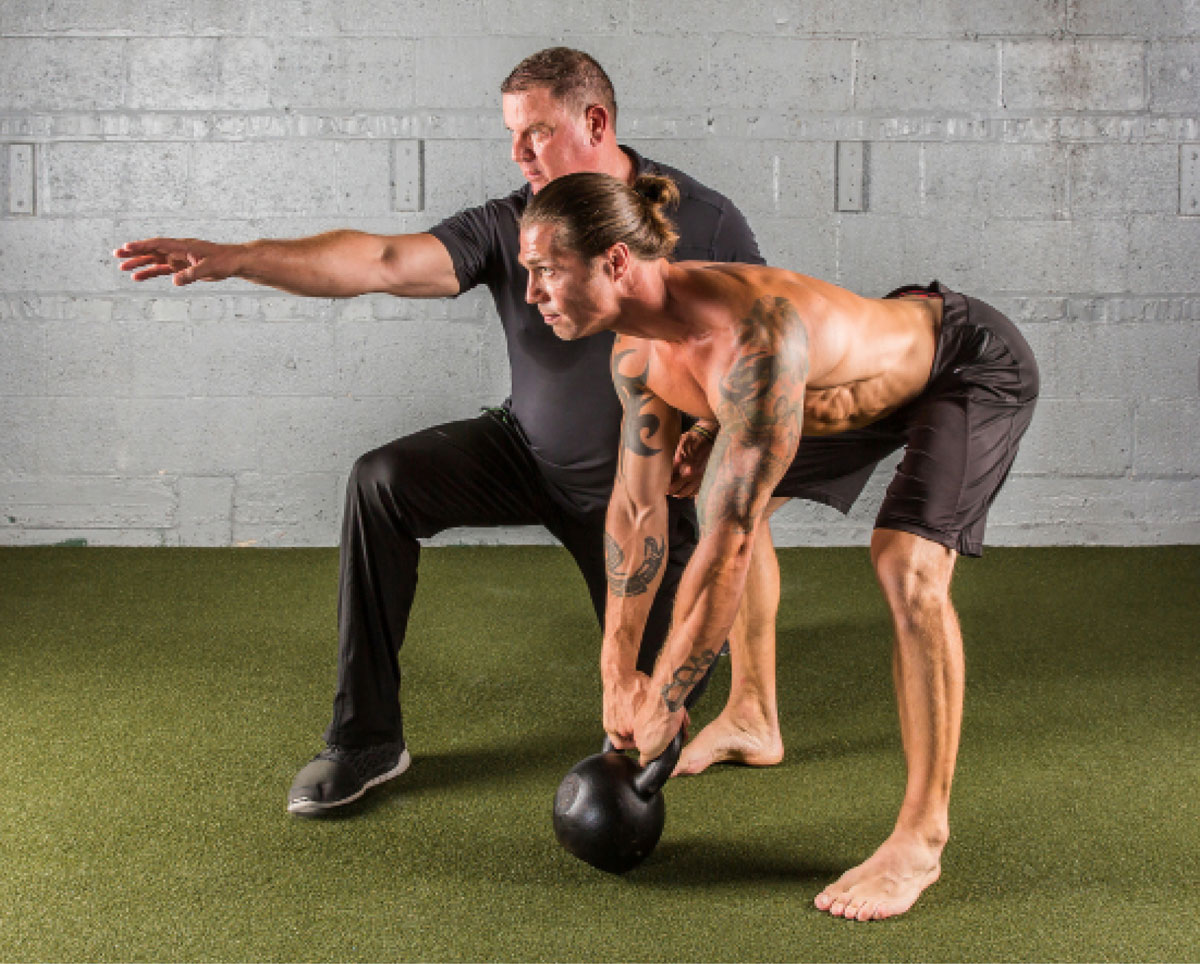
And…I was wrong.
That’s what happens when one decides too early on what is right and what is wrong concerning “all things fitness.” I tend to do that a lot.
It’s taken me a while to come around to understanding what the RKC II is truly all about…in the big picture.
My biggest issue was simple: Why? Why do it?
I’m the biggest fan of the HKC. We have three things:
- Swing
- Goblet Squat
- Get Up
Honestly, those are the million-dollar movements of the kettlebell world and are the basis of all the teaching, learning and ongoing progress. You could look damn good just doing those three and move like a (fill in the animal of the week).
The RKC adds the Clean, the Press and the Snatch and that is more than enough for most people in most situations. Not long ago, I was asked what to do for the “perfect” program for older adults (“Hey, that’s me”)…with a SINGLE kettlebell… and I gave this list:
- Half-Kneeling Presses
- Hangs from the Pull Up Bar
- Swings (as appropriate)
- Goblet Squats
- Suitcase Carries
- Get Ups
Keep the reps reasonable and repeatable and you can enjoy this workout long into your journey on this little blue green orb.
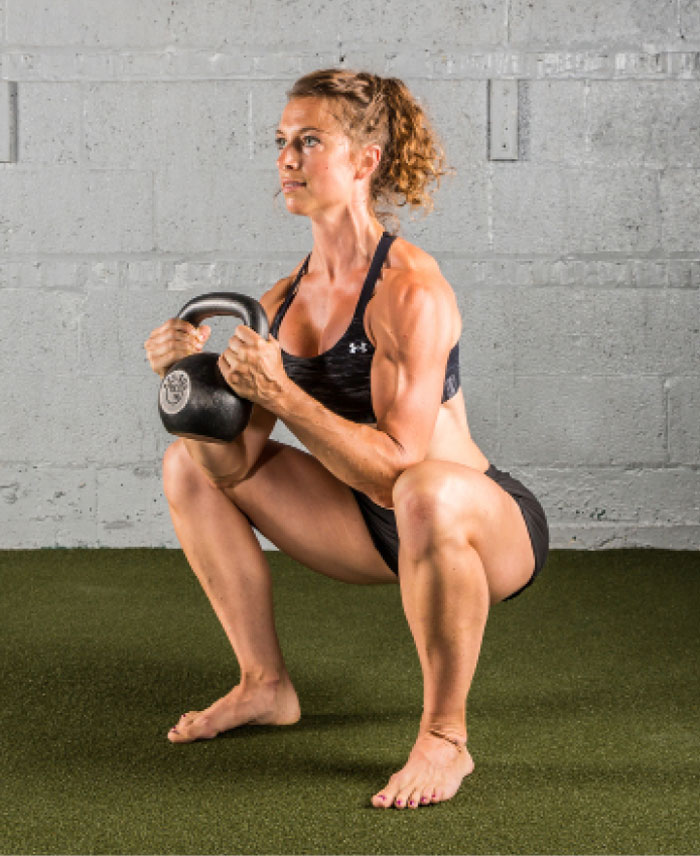
So, why the RKC II? Yeah, I know…who needs it?
Turns out the answer is “Me!!!”
Let’s review, in no actual specific order, the three reasons I think you should consider the RKC II besides a bunch of other good reasons (like having “RKC II” after your name).
The first one didn’t occur to me until my last course in New York City. I began to notice an interesting thing as the candidates interacted with each other. No, it was more than just “where are you from?” and all the simple introductions. They were sharing information. They were giving feedback. It wasn’t just the Dan John show: the students were teaching each other.
The goal of all education models is for the lines to blur between student and teacher. As a paid teacher and coach since 1979, I loathe movies about teachers as they only come in two “sizes:”
The all-knowing “guru” who fights the system, loses, but the students win by the brave example.
Or…
Absolute idiots. Every teacher is either having an affair, lazy, dumb or, well, that’s enough for you to get the idea.
Oddly, Mr. Hand is probably the most “accurate” teaching model I have seen in a movie, Fast Times at Ridgemont High. Feel free to disagree.
I feel empowered when the group begins to interact, instruct, and innovate. Sometimes, a drill gets expanded by a suggestion or hint. “We do this and…” Like in improv, it’s all about the “and.”
Unless you are Michael Scott. If you haven’t seen the American version of The Office that won’t make sense. Oh…if you haven’t seen the American version of The Office, watch the first four seasons. You are welcome. He seems to struggle with the basic idea of improv. And…let’s continue.
Here is something I didn’t realize at first: At the RKC II, I have NEVER EVER had someone whine and bitch about the snatch test. I don’t hear the complaints about how unfair this snatch test is to (again…fill in the blank) and how those of us (fill in the blank) should have an easier test.
Everyone at the RKC II has already bought in. They know that they will be tested on the movements. They know they will have workouts in the middle of sessions and spend a fair amount of time in stressful positions learning stressful positions.
Moreover, in that stressful position, a teammate will come over and assist. The position will improve. Notes will be made. We will all be better.
It’s amazing to watch. It’s worth going to the RKC-II to be part of it.
Second, although we do a lot of work in the Pistol and Pull Up, my favorite part of the weekend is the Windmill and Bent Press. As many know, I don’t really use the Bent Press…ever.
But.
The progression up to the Windmill and Bent Press might be the most important part of the weekend. I have a gentle series of mobility and flexibility movements inspired by many schools of movement (with a grateful nod to Tim Anderson and his Original Strength) that brings us up, nearly joint by joint, to the full Windmill and Bent Press movements. We use the floor, sticks, bells and our own human body load to prepare to do this right.
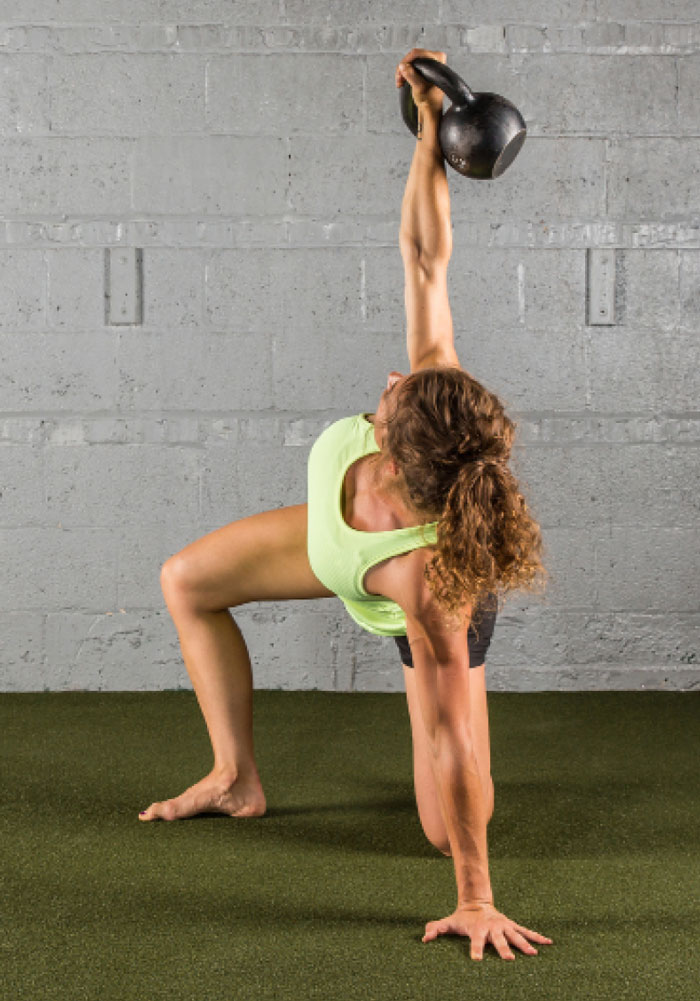 We spend a lot of time in the Kneeling Windmill position, that moment in the Get Up where the loaded hand is high, the loaded leg is in the windshield wiper position and the supportive hand, knee and foot are in a straight line on the ground, and basically do a lot of drills here.
We spend a lot of time in the Kneeling Windmill position, that moment in the Get Up where the loaded hand is high, the loaded leg is in the windshield wiper position and the supportive hand, knee and foot are in a straight line on the ground, and basically do a lot of drills here.
This position reinforces the Get Up as the KW might be the one of the two most important parts of the whole move, in my opinion. The other is the rolling part at the start. I have often said, and never given credit for my brilliant insight, that if we called this the Roll Up rather than the Get Up most of our problems would vanish in the teaching of this wonderful movement.
The thing I love about the KW is that it is safe. We have four points of support on the ground so we can hinge back, we can press and we can bend to move in this position with a high level of safety.
The progression up to this position gives our candidates time to adjust and wiggle and lubricate enough to be ready to move into our advanced movements. When they go home and teach a roomful of the rest of us, this progression can be used appropriately to get the benefits of the advanced movements without having to worry about some of the problems with using the Windmill and Bent Press.
Frankly, most people’s spines, sides, shoulders, and systems aren’t fired and wired to do these advanced movements on Day One. Or Day One Hundred and One…or…
But they can do the progressions.
Third, we learn the overhead ballistics. As I have noted before, my friend the late great Brian Oldfield used to tell us: “You can’t think through a ballistic movement.”
Maybe YOU can. The best and brightest can NOT.
I teach the candidates to use their ears to listen to the feel moving (and stomping). I have them play around with foot positions to work on an appropriate explosive dip. But then it is time to stop the teaching and start the doing.
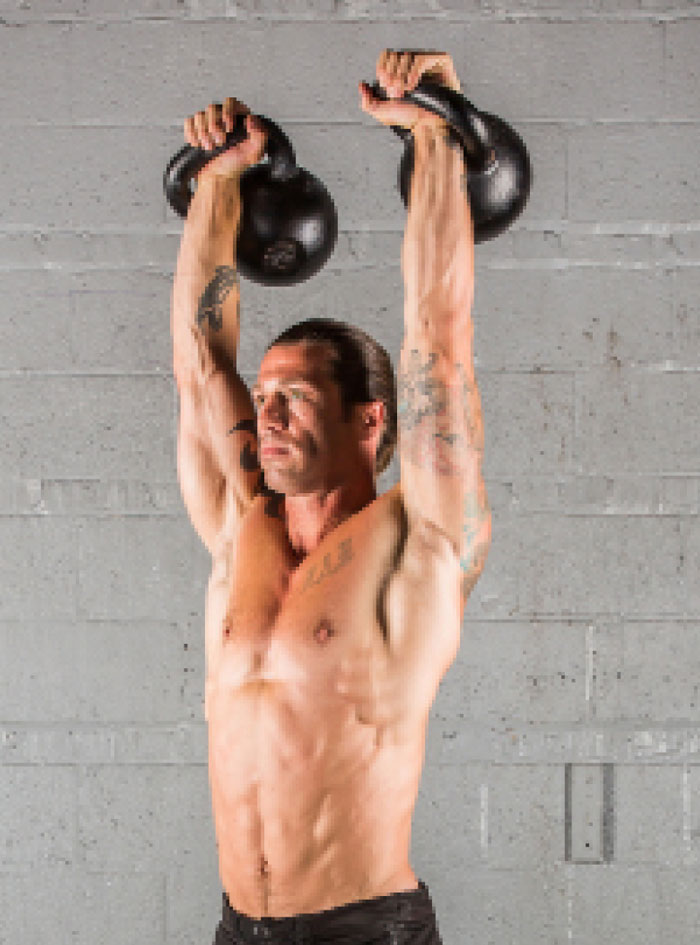 I like doing the Double Clean and Double Jerk for a single rep. Every twenty seconds…for twenty minutes. As many know, my favorite assistant coach is Coach Repetition and few people are still asking questions after minute ten. Learning ballistics demands high reps. Learning ballistics demands some time between reps to regather and reload. At the RKC II, I have the time to teach…and we use it.
I like doing the Double Clean and Double Jerk for a single rep. Every twenty seconds…for twenty minutes. As many know, my favorite assistant coach is Coach Repetition and few people are still asking questions after minute ten. Learning ballistics demands high reps. Learning ballistics demands some time between reps to regather and reload. At the RKC II, I have the time to teach…and we use it.
The ballistic work at the RKC II often gets the candidates reviewing how they teach the basics of the swing, snatch and clean. I know, it’s my fault that the 10,000 KB Swing Challenge became a “thing,” but, you know, at the end…people know how to swing!
You need some reps to learn ballistic work. When I follow up with the RKC II candidates, they often note that we all forget this basic truth about ballistics.
Let me repeat that: you need a lot of reps. Without fear of redundancy: you need a lot of reps. Do I need to repeat that again?
